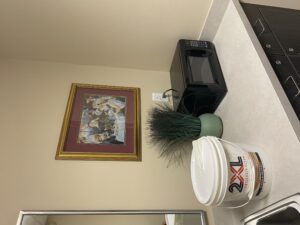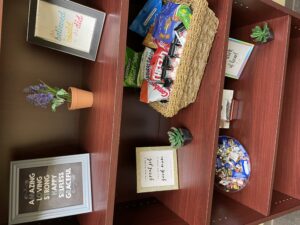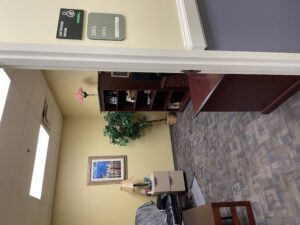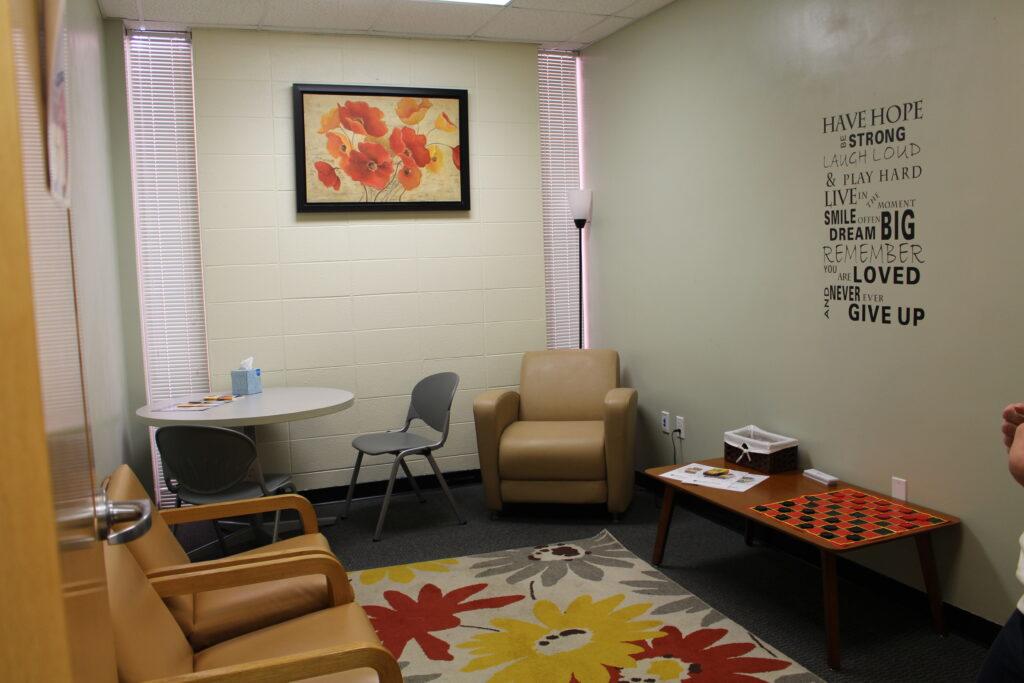Dionte Berry
News Editor
dberry11@murraystate.edu
On-campus accommodations have been made for lactating mothers with the creation of three spaces that allow for chestfeeding and pumping in private settings with necessary supplies.
The establishment of lactation rooms comes nearly two years after former Kentucky Governor Matt Bevin signed the Kentucky Pregnant Workers Act.
The act put into law that employers should accommodate pregnant employees and have designated lactation spaces that are private, comfortable and not a restroom stall.
Murray State’s Women’s Faculty Caucus started advocating for a lactation area in 2018.
Associate Professor of Spanish Tanya Romero-Gonzalez was a part of the inception of the Women’s Faculty Caucus in 2016 and was one of the Caucus members who advocated for the on-campus lactation space.
“We started this process in 2018 in one of the committees of the WFC,” Romero-Gonzalez said. “It was started by the Work Life Balance Committee and we presented an evidence based petition to the Insurance and Benefits Committee that listed the benefits of having a lactation room on campus.”
Romero-Gonzalez said some of the benefits of a lactation room named in the petition were an increase in quality research and increased student retention.
Along with these benefits, it was required by law and Murray State was not meeting that requirement. Romero-Gonzalez said most faculty members would have to express their milk in their offices. Not everyone is comfortable with doing that and not all faculty members have private offices.
“Murray State would have to provide a room and they would have to work with the Institutional Diversity, Equity and Access Office because it was an official accommodation,” Romero-Gonzalez said. “I know people that use a different room than their office, but not every space is equipped with what they need. That is why having an official space is important because we don’t want any obstacles in fulfilling lactation needs.”
In advocating for the lactation room, the Caucus worked with and reached out to several other campus groups. The Caucus reached out to school administration, the Benefits Committee, Human Resources and the ADVANCE Team in order to get the wheels turning towards fulfilling on-campus needs and inclusivity.
For Romero-Gonzalez, establishing the lactation room is a part of a bigger mission of creating an environment that is more accommodating for caregivers.
“We want to have support for faculty who are caregiving because it is hard right now to do our jobs with young children in the middle of the pandemic,” Romero-Gonzalez said.
Associate Professor of Sociology Diane Nititham was a part of the advocacy efforts for a lactation room.
As a mother, Nititham has had her own experiences with needing to lactate while on campus.
In 2017, she had an experience she describes as “odd” and said many other faculty and staff have had similar experiences.
“I was attending a faculty summit in the fall before school began and I had asked if there was a space to pump because I was supposed to be in the Curris Center all day,” Nititham said. “I went through my department chair who told me to contact the Provost Office and then I contacted the IDEA Office.”
Nititham was told that there would be an open office for her that would be private and set up with the materials necessary for her lactation.
However, when she went to the office to set up, she saw that was far from the truth.
“The person’s office provided me with a clear door and they just happened to be home sick so I do not know the plan had the person been there,” Nititham said. “I went in there and it was not set up, so they had to move stuff off the table so I could put the pump on the table, and they went to the bathroom and said, ‘We are going to improvise.’ And they got paper towel sheets and just taped it up on the door so I could have privacy.”
The setting was not at all ideal for lactating. Her own experiences combined with others is a part of the reason why Nititham saw advocating for a lactation room as necessary.
“It is important for our community to provide lactation spaces for those who work here and live here in spaces that are welcoming instead of borrowed space,” Nititham said.
As a result of the advocacy from Romero-Gonzalez, Nititham and the Caucus, there is a lactation room in Blackburn Science Building Room 153. The room can be reserved on a Google Calendar linked on the Women’s Center page on murraystate.edu.


“Blackburn was determined because it was under construction, but ideally every building would have a lactation room, but we will start with one,” Romero-Gonzalez said.
Along with the Blackburn lactation room, the Women’s Center made a caregiver centered space called the Family Room in Oakley Applied Science Building.
The area can serve as a lactation space and is a child-friendly place at Murray State.
The Caucus also worked with the Women’s Center in establishing the Lactation Room. However the Women’s Center has made further strides in supporting the goal of a more caregiver friendly environment on campus.
The Family Room is a multipurpose room in the Oakley Applied Science Building. The room can be used as a child friendly space and lactation space. Compared to the Blackburn space, the Family Room is first come first serve and does not require any reservations.
Across 16th Street there is another lactation space in Alexander Hall that was constructed almost overnight, two nights to be exact.
The lactation room was spearheaded by Tamela Darnell, the business administrative manager for the College of Education and Human Services and the building coordinator, and Amy Levering, the Administration Assistant to the Dean’s Office and the Event Coordinator for the College.
“I was on maternity leave, and when I came back, Amy and our previous admin had come up and talked to me about an idea of doing a lactation room and then it kind of went nowhere,” Darnell said. “The Friday before the semester started I went to Amy and I said, ‘Let’s go find an office and just look for a place,’ and then we found an office and then I said, ‘Amy lets just do this.’”
Darnell and Levering moved chairs around from empty offices and made a trip to Dollar Tree to get a rug, fake flowers and some snacks and a refrigerator they borrowed from the Dean’s office in order to make it more comfortable and fulfilling for those using the room.
“We got the room finalized in about two days,” Darnell said. “We only did it because we had such wonderful support from Dean David Whaley. He was full on board and we asked him if we could make this a permanent space he said yes.”
Once room 3103 was converted, Darnell made a post on Facebook about it and received around 20,000 views. It caught such traction that people started making donations.


“A friend reached out to me and she was like, ‘how do I donate?’,” Darnell said. “She donated some money and we were able to buy the lactation room sign that switches back and forth to show if it is available or in use.”
Those wanting to donate can do so at the Murray State Foundation website at bit.ly/coehsffe!.
To sign up to use the room, there is a Google Calendar that can be accessed from a QR code on the Lactation Room fliers posted around campus. Darnell and Levering are hoping to use their experience with their Lactation Room to advocate for more of these spaces on Murray State.
“It would be nice to have one towards the Business Building, Sparks Hall, so there are good spots on campus everywhere,” Levering said. “We want students, faculty and staff, if they are in a building that does not have a space, we have a space for you. You are welcome to use our space.”




























































































